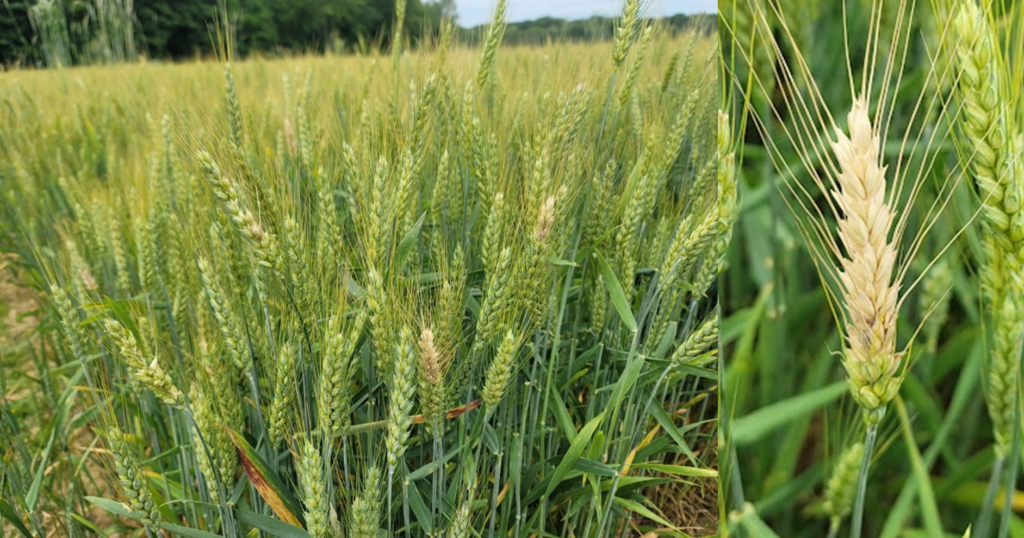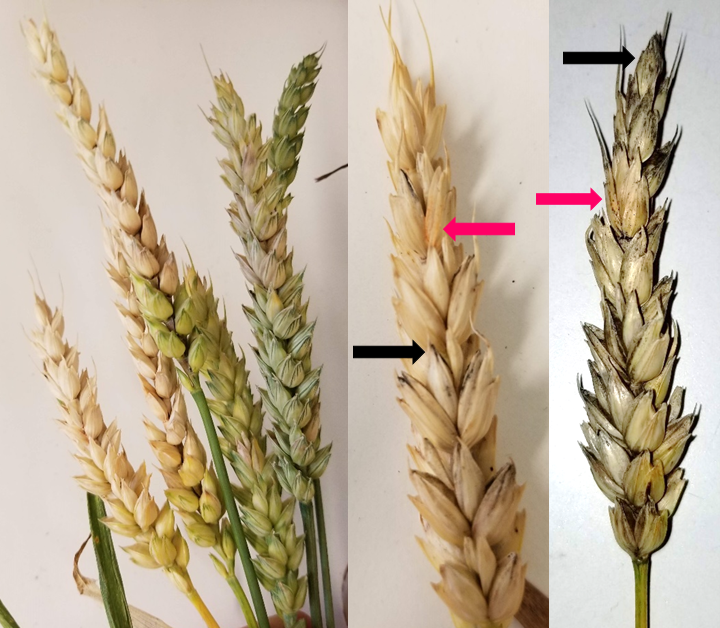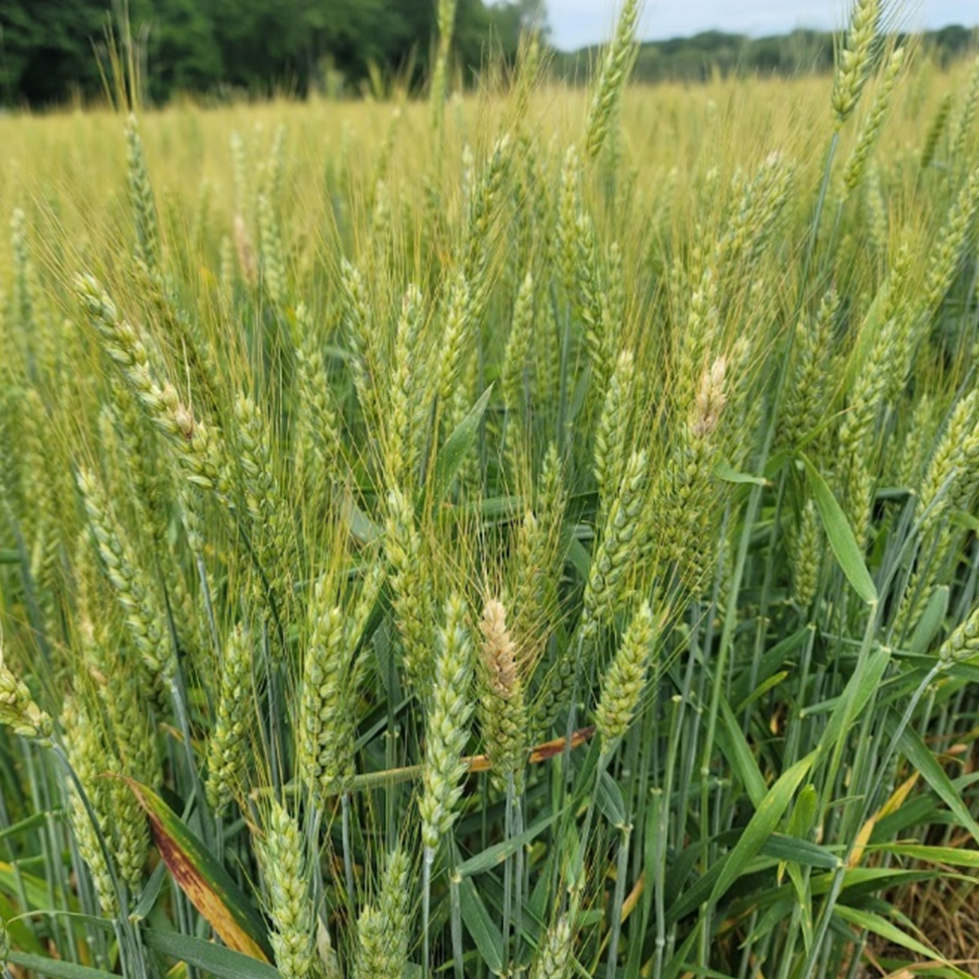Wheat has reached dough stage (Feekes 11.2) in our research plots in Southern Indiana. As we look to thinking about harvest it is time to check for Fusarium head blight (FHB) or scab. It is one of the most important diseases of wheat and most challenging to prevent. FHB infection can cause the production of a mycotoxin called deoxynivalenol (DON or vomitoxin). The environmental conditions were moderately conducive to FHB development in southern Indiana and we detected scab in wheat heads that we rated this week.
Fusarium head blight management is difficult and requires an integrated approach. This includes selection of varieties with moderate resistance and timely fungicide application at flowering. We are now past implementing either of these management options, but these are important to remember for next year. In addition, it will be important to assess your fields this season to determine if you have FHB. FHB can cause direct yield loss creating seeds that are shriveled and have a rough, sunken appearance to complete head loss. FHB infection can also reduce seed quality and feeding value of the grain due to the risk of mycotoxin (DON/vomitoxin) production in infected seed.
The question now is “I have scab in my field what do I need do?” Here’s a short list.
1. Document the issues in each field, so you have records for making decisions on future disease management. FHB is easy to see when the head is still green – it will be much more difficult to rate as the heads reach maturity. See images of FHB in the head both at green (Figure 1) and more mature stages (Figure 2). You might be able to see the pink salmon sporulation and/or purple-black fruiting bodies on mature heads (Figure 2). In addition, it is good to note during the season what management tools were attempted – spray date and growth stage of crop, was there variability in the growth stages, weather conditions after fungicide applications. These all can play a role in effective disease management.

2. Harvest fields with lowest disease first; adjust combine settings to blow out the smaller, shriveled kernels and chaff; and separate loads from healthy and disease fields. Mycotoxin contamination is usually the highest in the more heavily disease kernels and if they can be removed that would help reduced mycotoxin level.
3. Test for DON levels in both kernel and straw before feeding to livestock. Scabby kernels do not always indicate high DON and vice versa. It is important to test and know what your DON numbers are in your grain, even if you don’t see a high level of disease. Straw can also contain DON. DO NOT use straw for bedding or feed from fields with high level of scab.
4. Understand your elevators inspection and dockage procedures (each one can have a different practice). Levels of DON greater than 2 ppm may lead to price discounts.
5. It is not recommended to store grain from field with high levels of scab – accumulation of DON and other mycotoxins can continue in stored grain. Suspect grain, if stored, should be dried to less than 15% moisture as soon as possible after harvest (13% for long-term storage) and kept separate from the good quality grain. It should be tested for mycotoxins before being used for food products of fed to animals.
6. Planting seed from fields that had moderate to heavy scab is not advisable. The infected seed will have low germination and poor vigor resulting in a thin stand. If going to use this seed, it should be cleaned thoroughly to remove the scabby seeds, and a fungicide seed treatment would be advised to protect germination and reduce seedling blight.
The next question “Why was is it so bad? I followed the guidelines applied my fungicide at flowering but we still have poor control.”
Here’s a few of my observations:
1. Moderately favorable environmental conditions for Fusarium head blight (FHB)/scab occurred in southern Indiana this spring.
2. Many wheat varieties have moderate resistance that help can reduce the risk of severe disease, and fungicides can help suppress the development, but this may only provide about 50% suppression. Therefore, even with the best management programs in place the extremely favorable conditions for FHB have led to high levels of infection this season.
3. Frequent rains not could have complicated fungicide application. Rain events closely following fungicide application may have diluted or washed off applications further reducing expected efficacy.
Additional references:
- US Wheat and Barley Scab Initiative https://scabusa.org/
- Friskop, A. et al. 2021. An overview of Fusarium head blight. Crop Protection Network. CPN 3005. https://cropprotectionnetwork.org/publications/an-overview-of-fusarium-head-blight

